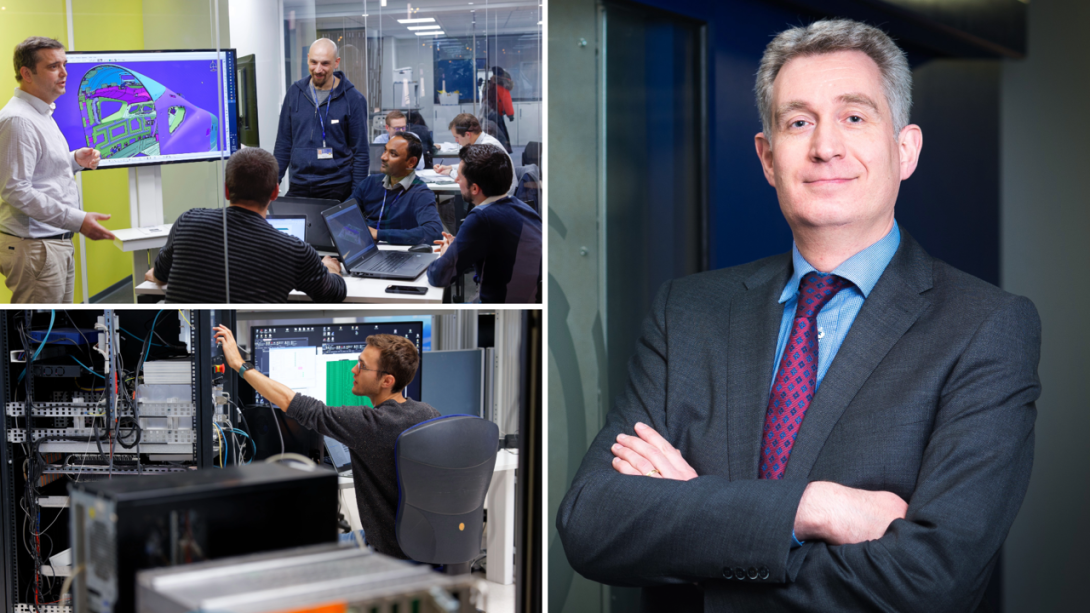Interview with Pierre Meunier, Innovation Excellence Director (ALSTOM)

It was at the ALSTOM Belgium Transport site in Charleroi that EuroCC Belgium met with Pierre Meunier, Innovation Excellence Director.
In Belgium, ALSTOM is the leading supplier of trains as well as signalling and railway services. It has two centres of excellence in Charleroi and a manufacturing site in Bruges.
EuroCC Belgium spoke with Pierre Meunier about the role of digital simulation and high-performance computing in driving innovation in the field of rail mobility.
As a manufacturer, operator, and maintenance provider, what do you see as the role of digital simulation and high-performance computing infrastructures in research and innovation activities at Alstom?
Digital simulation plays a key role in the development of complex systems. It allows the visualisation and evaluation of a system before it is built. As a design support tool, it has become indispensable, whether for the development of mechanical or electrical components or for the optimisation of electromagnetic equipment.
At ALSTOM, the use of digital twins is standard practice in train design. This virtual model allows a wide range of simulations, such as mechanical stress analysis, - well before production begins, improving both the reliability and efficiency of the development process.
In Belgium, complex digital simulation is often used to optimise shapes or parts intended to fit into electromechanical assemblies.
For example, we contributed to the development of an innovative electric motor (with Cenaero and ULiège), where the main goal was to optimise component geometry to achieve the best balance between magnetic and mechanical performance.
Faced with increasingly complex challenges, digital simulation has become an essential tool, enabling effective solutions to these new demands.
High-Performance Computing: Use Cases at ALSTOM
High-performance computing (HPC) is a key technology that supports many use cases common across various industries. At Alstom, at least three main use cases can be identified:
- Simulation and design optimisation: HPC allows rapid exploration of many configurations to identify optimal solutions from the earliest stages of development.
- Optimisation for complex problems: A concrete example is the placement of equipment along railway tracks. This involves solving multi-criteria optimisation problems, such as determining the optimal positioning of equipment to reduce costs, particularly those related to cabling (a project in partnership with CETIC).
- Using artificial intelligence to support testing procedures in software development: ALSTOM develops complex software (several hundred thousand lines of code) for critical applications with very long life cycles (several decades). These software systems require rigorous validation processes. AI is used to define or improve testing procedures, accelerating the convergence toward reliable and high-performance software while reducing development costs.
In which situations do you use digital twins?
We use digital twins in several contexts, depending on the objectives.
On the one hand, they are increasingly integrated into virtual reality tools, particularly to optimise maintenance strategies. This allows us to assess feasibility, ergonomics, and accessibility in advance during interventions. In this type of use, high-performance computing (HPC) is not always necessary: internal IT resources are often sufficient.
On the other hand, we have more complex use cases, such as trains operating in highly varied environments: different track profiles, the presence or absence of tunnels, and specific weather conditions, among others. Here, the digital twin allows us to simulate the train’s behaviour in these multiple contexts and anticipate the necessary adaptations. This type of more demanding simulation may require the use of HPC.
"Having a digital twin of the train within a digital twin of its environment allows us to test it in its real-world context. This is an advantage and helps us remain more competitive compared to our competitors."
Rail Infrastructure Optimisation
In Europe, the railway network is already well developed, so global infrastructure modeling is not a priority for us. However, we can support our clients on specific use cases, even proposing topology modifications when relevant.
Moreover, more targeted topics, such as cabling or schedule planning, receive particular attention. Using our simulator, we develop and test automated driving algorithms with a dual objective: adhering to schedules while optimising energy consumption.
Train Design
At ALSTOM, several optimisation axes guide train design: weight reduction, optimisation of available space, improvement of shapes, and more. These efforts aim to enhance both energy performance and passenger comfort.
In collaboration with Cenaero, we have also conducted studies on airflow along the train, addressing issues related to heat dissipation.
Connected and Autonomous Mobility
The collection and use of data is essential.
Estimating the remaining capacity of a battery, for example, is a major challenge because it strongly depends on the battery’s usage history. Collecting and analysing this data throughout the battery’s life cycle allows us to feed relevant predictive models. This approach can rely on remote models, which sometimes require high-performance computing (HPC).
Regarding autonomous systems, I am more cautious, as autonomous networks have already existed for several years (e.g., metros), which limits the potential for disruptive technological breakthroughs.
On this topic, ALSTOM regularly collaborates with various research and industry partners through projects supported by Wallonia.
Cenaero is a key partner for ALSTOM. The research center provides expertise in modelling physical phenomena and facilitates our access to high-performance computing infrastructure. Conversely, ALSTOM provides Cenaero with an industrial environment rich in use cases, allowing us to develop projects that are meaningful. It is a very fruitful collaboration.